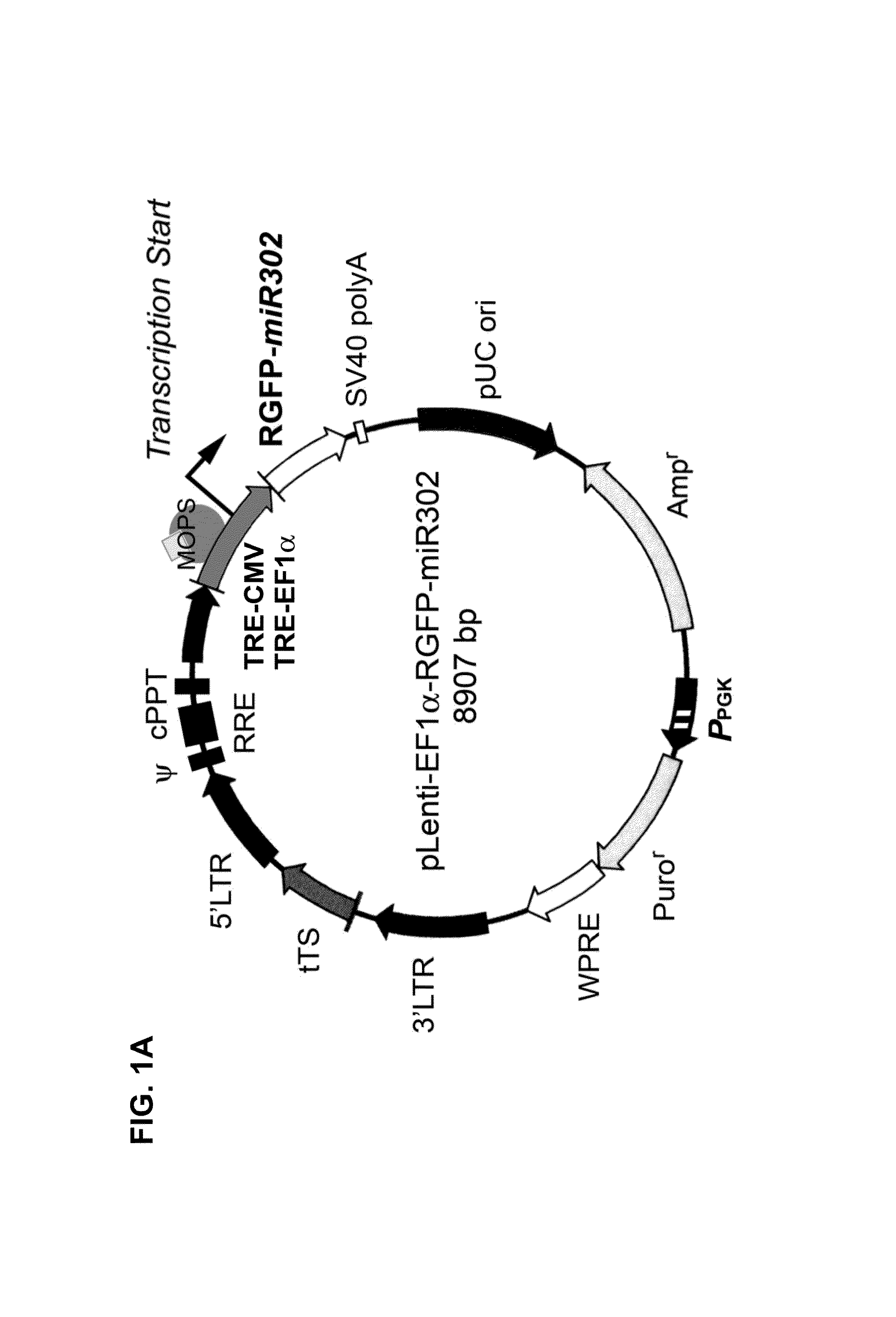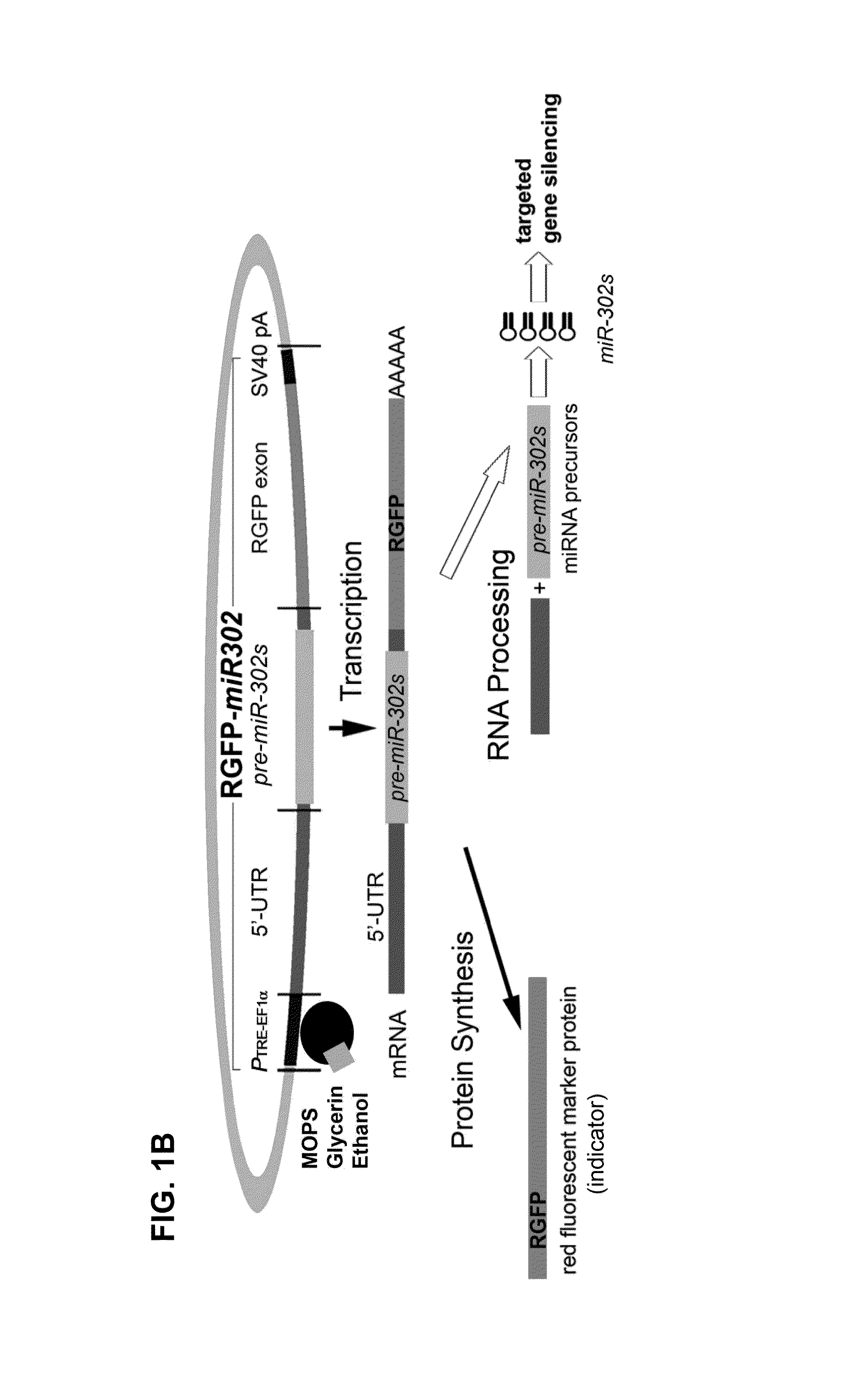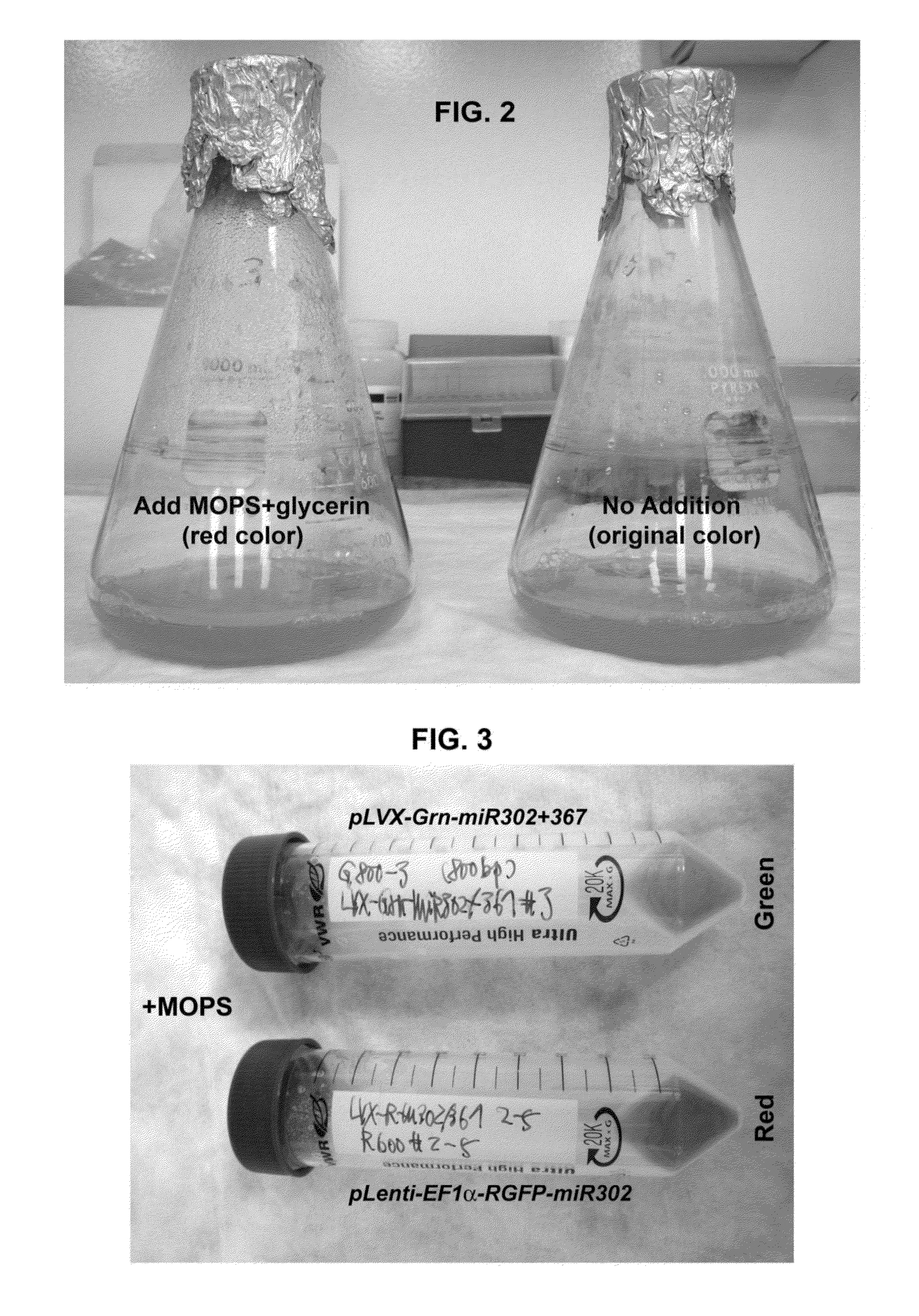Production and extraction of MicroRNA precursor as drug for cancer therapy
a technology of microrna and precursor, which is applied in the direction of biochemistry apparatus and processes, organic chemistry, sugar derivatives, etc., can solve the problems of not being able to grow bacteria, and achieve the effects of reducing the number of mitotic cells, and effectively attenuating the fast cell cycle ra
- Summary
- Abstract
- Description
- Claims
- Application Information
AI Technical Summary
Benefits of technology
Problems solved by technology
Method used
Image
Examples
Embodiment Construction
[0112]In the experimental disclosure which follows, the following abbreviations apply: M (molar); mM (millimolar); μm (micromolar); mol (moles); pmol (picomoles); gm (grams); mg (milligrams); μg (micrograms); ng (nanograms); L (liters); ml (milliliters); μl (microliters); ° C. (degrees Centigrade); RNA (ribonucleic acid); DNA (deoxyribonucleic acid); dNTP (deoxyribonucleotide triphosphate); PBS (phosphate buffered saline); NaCl (sodium chloride); HEPES (N-2-hydroxyethylpiperazine-N-2-ethanesulfonic acid); HBS (HEPES buffered saline); SDS (sodium dodecylsulfate); Tris-HCl (tris-hydroxymethylaminomethane-hydrochloride); ATCC (American Type Culture Collection, Rockville, Md.); hESC (human embryonic stem cells); and iPSC (induced pluripotent stern cells).
1. Bacterial Cell Culture and Chemical Treatments
[0113]E. coli DH5alpha competent cells were acquired as a part from the z-competent E. coli transformation kit (Zymo Research, Irvine, Calif.) and then transformed by mixing with 5 μg of ...
PUM
| Property | Measurement | Unit |
|---|---|---|
| temperature | aaaaa | aaaaa |
| molecular structure | aaaaa | aaaaa |
| volume concentration | aaaaa | aaaaa |
Abstract
Description
Claims
Application Information
 Login to View More
Login to View More - R&D
- Intellectual Property
- Life Sciences
- Materials
- Tech Scout
- Unparalleled Data Quality
- Higher Quality Content
- 60% Fewer Hallucinations
Browse by: Latest US Patents, China's latest patents, Technical Efficacy Thesaurus, Application Domain, Technology Topic, Popular Technical Reports.
© 2025 PatSnap. All rights reserved.Legal|Privacy policy|Modern Slavery Act Transparency Statement|Sitemap|About US| Contact US: help@patsnap.com



